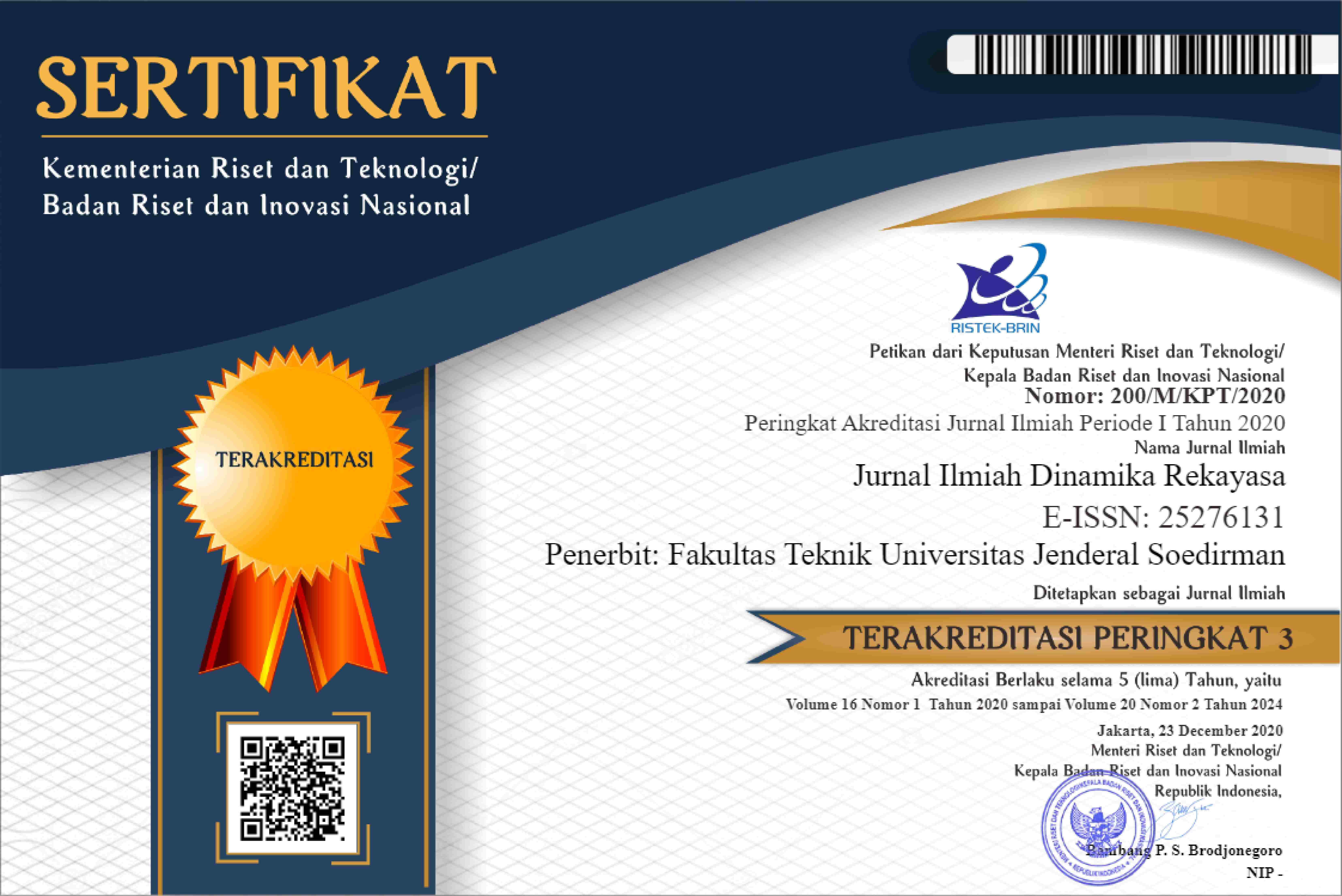Formasi Pengelompokan Siswa Pada Alat Kolaborasi Pendidikan Perangkat Lunak: Komposisi Ulang Tim Proyek Berbasis Algoritma Genetika
Danang Wahyu Utomo(1*), Egia Rosi Subhiyakto(2), Defri Kurniawan(3)(1) Teknik Informatika, Universitas Dian Nuswantoro, Indonesia
(2) Teknik Informatika, Universitas Dian Nuswantoro, Indonesia
(3) Teknik Informatika, Universitas Dian Nuswantoro, Indonesia
(*) Corresponding Author
Abstract
Full Text:
PDFReferences
D. W. Utomo and D. Kurniawan, “Formasi kelompok dinamis untuk mendukung kolaborasi pembelajaran proyek perangkat lunak,†J. Inov. Teknol. Pendidik., vol. 7, no. 1, pp. 42–51, 2020.
D. W. Utomo, D. Kurniawan, and R. R. Sani, “Pemodelan Algoritma Genetika dalam Pengelompokan Siswa Pada Kolaborasi,†in Seminar Nasional Dinamika Informatika 2020 Universitas PGRI Yogyakarta, 2020, pp. 148–152.
M. M. Jati Wijaya, D. W. Utomo, and D. Kurniawan, “Implementing Dynamic Group Formation in Web-Based Collaborative Learning for High School,†in 2019 International Seminar on Research of Information Technology and Intelligent Systems (ISRITI), 2019, pp. 528–533.
I. Noguera, A. E. Guerrero-Roldán, and R. Masó, “Collaborative agile learning in online environments: Strategies for improving team regulation and project management,†Comput. Educ., vol. 116, pp. 110–129, 2018.
M. Marques, S. F. Ochoa, M. C. Bastarrica, and F. J. Gutierrez, “Software Engineering Project Courses,†IEEE Trans. Educ., vol. 61, no. 1, pp. 63–73, 2018.
I. Srba and M. Bielikova, “Dynamic group formation as an approach to collaborative learning support,†IEEE Trans. Learn. Technol., vol. 8, no. 2, pp. 173–186, 2015.
H. Rahman, S. B. Roy, S. Thirumuruganathan, S. Amer-Yahia, and G. Das, “Optimized group formation for solving collaborative tasks,†VLDB J., vol. 28, no. 1, 2019.
D. W. Utomo et al., “Tool Enhancement For Collaborative Software Engineering Education,†Semin. Nas. Teknol. Inf. dan Komun. 2015 (SENTIKA 2015), pp. 9–16, 2015.
A. Krouska, C. Troussas, and M. Virvou, “Applying genetic algorithms for student grouping in collaborative learning: A synthetic literature review,†Intell. Decis. Technol., vol. 13, no. 4, pp. 395–406, 2020.
A. Lambora, K. Gupta, and K. Chopra, “Genetic Algorithm- A Literature Review,†2019 Int. Conf. Mach. Learn. Big Data, Cloud Parallel Comput., no. 1998, pp. 380–384, 2019.
A. K. Nugroho and I. Permadi, “Implementasi Jalur Pendek Menggunakan Ant Colony Optimization,†Din. Rekayasa, vol. 16, no. 1, pp. 61–68, 2020.
W. Zhang et al., “Decision support for project rescheduling to reduce software development delays based on ant colony optimization,†Int. J. Comput. Intell. Syst., vol. 11, no. 1, pp. 894–910, 2018.
Z. Zheng and N. Pinkwart, “Dynamic Re-Composition of Learning Groups Using PSO- Based Algorithms,†in Proceedings of the 7th International Conference on Educational Data Mining, 2014, no. 3, pp. 357–358.
H. Rahman, S. B. Roy, S. Thirumuruganathan, S. Amer-Yahia, and G. Das, “Optimized group formation for solving collaborative tasks,†VLDB J., vol. 28, no. 1, pp. 1–23, 2019.
S. Amara, J. Macedo, F. Bendella, and A. Santos, “Group formation in mobile computer supported collaborative learning contexts: A systematic literature review,†Educ. Technol. Soc., vol. 19, no. 2, pp. 258–273, 2016.
W. O. Apeanti and D. Essel, “Learning Computer Programming Using Project-Based Collaborative Learning,†Int. J. Innov. Educ. Res., vol. 9, no. 8, pp. 191–207, 2021.
Y. Zheng, C. Li, S. Liu, and W. Lu, “An improved genetic approach for composing optimal collaborative learning groups,†Knowledge-Based Syst., vol. 139, pp. 214–225, 2018.
P. I. Ciptayani, K. C. Dewi, and I. W. B. Sentana, “Student grouping using adaptive genetic algorithm,†Proc. - 2016 Int. Electron. Symp. IES 2016, pp. 375–379, 2016.
A. Sukstrienwong, “A Genetic-algorithm Approach for Balancing Learning Styles and Academic Attributes in Heterogeneous Grouping of Students,†Int. J. Emerg. Technol. Learn., vol. 12, no. 03, pp. 4–25, 2017.
A. Farissi, H. M. Dahlan, and Samsuryadi, “Genetic algorithm based feature selection for predicting student’s academic performance,†Adv. Intell. Syst. Comput., vol. 1073, pp. 110–117, 2020.
T. K. Shih, W. K. T. M. Gunarathne, A. Ochirbat, and H. M. Su, “Grouping peers based on complementary degree and social relationship using genetic algorithm,†ACM Trans. Internet Technol., vol. 19, no. 1, 2018.
S. Garshasbi, Y. Mohammadi, S. Graf, S. Garshasbi, and J. Shen, “Optimal learning group formation: A multi-objective heuristic search strategy for enhancing inter-group homogeneity and intra-group heterogeneity,†Expert Syst. Appl., vol. 118, pp. 506–521, 2019.
Refbacks
- There are currently no refbacks.





